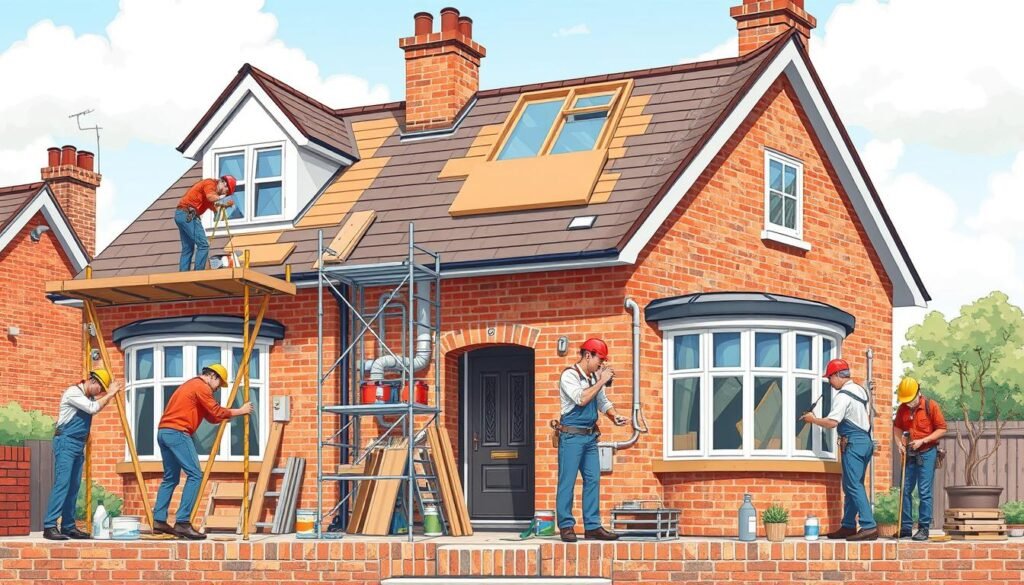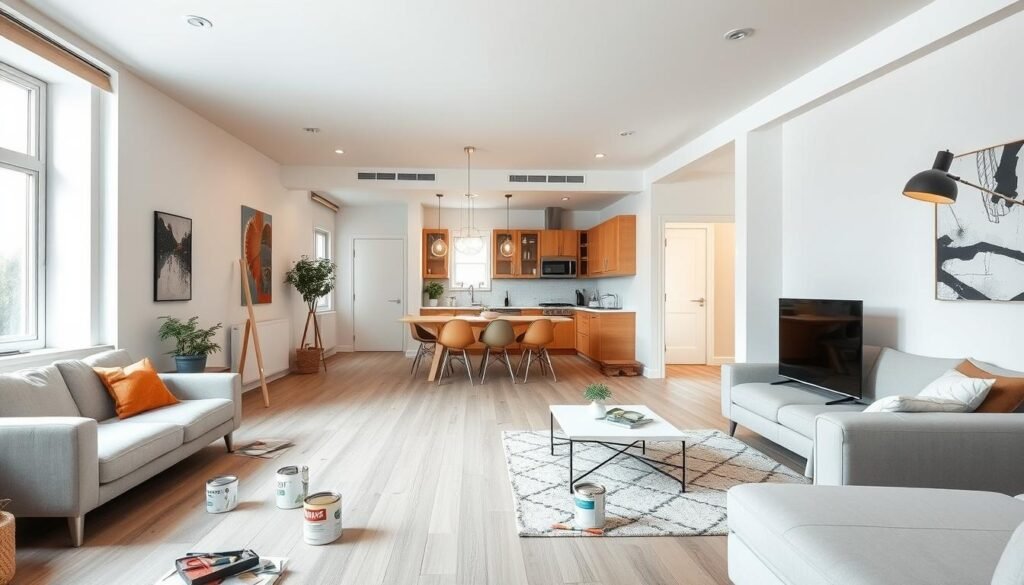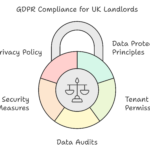The average cost of a rental property renovation in the UK for 2024 is a staggering £146,000, according to industry estimates. However, the actual expenses can range anywhere from £40,000 to an eye-watering £300,000 or more, depending on the scope and ambition of the project. For a standard 3-bedroom semi-detached house, the typical renovation budget falls between £75,000 and £150,000, excluding any major extensions or conversions. These costs are significantly influenced by regional variations, with a notable North-South divide across the United Kingdom.
Key Takeaways
- The average cost of rental property renovations in the UK for 2024 is £146,000, with a wide range of £40,000 to £300,000+.
- For a standard 3-bed semi-detached house, the typical renovation budget is £75,000 to £150,000, excluding major extensions or conversions.
- Regional variations, particularly the North-South divide, have a significant impact on renovation costs.
- Factors like material quality, finishing level, and the need for HVAC, electrical, and plumbing upgrades can substantially influence the overall renovation budget.
- Understanding the price guide for 2024 is crucial for landlords and property investors planning their rental property renovations.
Understanding the Basics of Rental Property Renovation
Renovating rental properties is a crucial step for UK landlords to maintain property value and attract high-quality tenants. The buy-to-let renovation budget and the overall UK landlord renovation pricing can vary significantly based on several key factors. Understanding these factors is essential for landlords planning a successful rental property renovation project.
Importance of Renovation for Rental Properties
Regularly renovating rental properties is vital for preserving their condition and maximising their appeal to potential tenants. Well-maintained and updated rental homes not only command higher rents but also retain their market value over the long term. Landlords who invest in proactive renovations often enjoy a better return on their investment compared to those who neglect property upgrades.
Factors Influencing Renovation Costs
The buy-to-let renovation budget and overall UK landlord renovation pricing are influenced by several factors, including the size of the property, its location, and the extent of work required. According to recent industry data, 2 in 5 renovators overshoot their budget by an average of 20%. Careful planning and accurate cost estimation are essential to avoid unexpected financial challenges during the renovation process.
Common Renovation Projects
- Kitchen upgrades, such as new appliances, countertops, and cabinetry
- Bathroom renovations, including fixtures, tiles, and plumbing updates
- Flooring replacement, including hardwood, laminate, or carpeting
- Energy efficiency improvements, like upgrading insulation, windows, and heating systems
These types of renovation projects are commonly undertaken by UK landlords to improve the overall condition, functionality, and appeal of their rental properties. Carefully selecting the right projects can significantly enhance the property’s value and rental yield.
| Renovation Project | Average Value Increase |
|---|---|
| Kitchen Upgrade | 6-10% |
| Bathroom Renovation | 4-6% |
| Loft Conversion | 10-15% |
| Energy Efficiency Improvements | 3-5% |
Average Rental Property Renovation Costs in 2024
As the rental market continues to evolve, the costs associated with renovating rental properties in the UK have seen a significant increase in 2024. Based on our analysis, the average rental flat renovation quotations can range from £25,000 to £50,000, depending on the scope of the project and the size of the property.
Breakdown of Costs by Project Type
When it comes to rental house makeover outgoings, the costs can be broken down as follows:
- Living room: £4,436
- Kitchen diner: £31,522
- Utility room: £3,887
- Bathroom: £7,955
- Bedrooms: £10,516
- Exterior work: £22,171
Essential Upgrades and Their Costs
In addition to the major renovation projects, there are also essential upgrades that landlords often need to consider. For example, new windows for a bedroom can cost around £2,000, while flooring can range from £80 for cheap carpets to £3,000 for quality hardwood.
Regional Cost Variations Across the UK
It’s important to note that renovation costs can vary significantly across different regions in the UK. Factors such as labour availability, material costs, and local market conditions can all contribute to these regional disparities. Landlords should carefully research the average costs in their specific location to better plan their rental property renovation projects.
Specific Renovation Areas and Their Prices
When it comes to revamping a rental property, specific renovation areas can significantly impact the overall property investment revamp outlays. Let’s explore the costs associated with some of the most common renovation projects.
Kitchen Renovations: What to Expect
Kitchen renovations typically form a substantial part of the budget, with costs averaging around £31,522. This can include replacing cabinets, countertops, appliances, and flooring. Upgrading the kitchen can significantly enhance the appeal and value of a rental property.
Bathroom Upgrades: Cost Insights
Bathroom upgrades are another crucial area of focus for property investment revamp outlays. On average, bathroom renovations cost approximately £7,955. This can involve replacing fixtures, tiles, vanity units, and potentially reconfiguring the layout to maximise space and functionality.
Living Area Improvements
Enhancing the living areas, such as the living room, dining room, and bedrooms, can also contribute to the overall property investment revamp outlays. Improvements like new windows, skirting, flooring, and painting can range from £1,000 to £5,000 for a master bedroom. Additional features like wallpaper or new electrical units can add hundreds or thousands more to the cost.
By understanding the typical costs associated with these renovation areas, landlords and property investors can plan their property investment revamp outlays more effectively and make informed decisions to maximise the value and appeal of their rental properties.
Labour Costs for Various Trades
When planning a rental property renovation in the UK, understanding the labour costs for various trades is crucial. These costs can vary significantly across different regions, with a notable North-South divide in pricing. Hiring experienced and reliable tradespeople is essential for a successful and cost-effective renovation project.
Cost of Hiring Builders and Contractors
The daily rates for tradespeople in the UK can range from £135 for an apprentice to £325 for skilled professionals like plumbers and electricians. General builders typically charge around £225 per day, while painters and decorators average £200 per day. Specialised trades like plasterers and carpenters can cost £225 per day.
Potential Savings by Doing It Yourself
- DIY can offer significant cost savings, but it requires time, skill, and a willingness to undertake the work yourself.
- For landlords with the necessary expertise, tackling some renovation tasks like painting, tiling, or basic carpentry can help reduce labour costs.
- However, it’s important to carefully assess your abilities and the complexity of the work to ensure a successful and safe renovation.
Tips for Finding Reliable Tradespeople
- Seek recommendations from other landlords, property management companies, or local trade associations.
- Check references and review the contractor’s previous work to ensure a high-quality standard.
- Obtain multiple quotes to compare pricing and find the most competitive and reliable option.
- Ensure tradespeople are fully insured and qualified to carry out the necessary work.
By understanding the labour costs for various trades and carefully selecting reliable contractors, UK landlords can effectively manage their rental property renovation budgets and ensure a successful outcome.

Planning and Design Fees
When it comes to rental property renovations in the UK, planning and design fees can have a significant impact on the overall budget. Understanding the costs associated with architectural services, interior design, and obtaining necessary permits is crucial for landlords and property managers. Let’s explore these key aspects of renovation planning and their associated expenses.
Understanding Architectural Services Costs
Hiring an architect can provide invaluable expertise, but their fees can vary widely. For a straightforward planning application, architects may charge £1,000 to £2,500, depending on the project’s complexity and location. Obtaining quotes from several architects can help determine the appropriate cost for your specific renovation needs.
Interior Design Services for Rental Properties
Investing in professional interior design services can enhance the appeal and functionality of your rental property. While the costs can range widely, budgeting for interior design fees, typically 10-15% of the overall renovation budget, is advisable to ensure a cohesive and visually appealing final result.
Permits and Planning Permission Costs
Securing the necessary permits and planning permissions is crucial for any rental property renovation project. In the UK, the cost for a householder planning application for alterations or extensions to a single dwelling is £258 as of December 2023. The application fee for a Certificate of Lawful Development, which covers projects that do not require planning permission, is half the cost of a regular planning application. It’s important to factor in these fees and the time required to obtain the necessary approvals, which can take up to 13 weeks for more complex applications.
| Renovation Project | Permit/Application Fee | Timeframe for Approval |
|---|---|---|
| Householder planning application for alterations/extensions | £258 | Up to 13 weeks |
| Certificate of Lawful Development | £129 | Up to 8 weeks |
| Full planning permission for significant alterations | £258 | Up to 13 weeks |
| Building a house with full planning permission | £578 | Up to 13 weeks |
By understanding these planning and design fees, landlords can better prepare their renovation budgets and ensure a smooth and compliant project execution.
Maintaining Energy Efficiency During Renovation
As the UK rental market continues to evolve, the importance of energy efficiency in property refurbishment has become increasingly crucial. Landlords seeking to maximise their property’s value and appeal must consider the costs and benefits of upgrading energy-efficient features. By investing in upgrades like insulation, double-glazing, and efficient heating systems, landlords can not only reduce their property’s carbon footprint but also attract eco-conscious tenants and potentially lower utility costs.
Importance of Energy Efficiency Upgrades
Energy efficiency is a growing concern for both landlords and tenants. Improvements to a property’s thermal performance and energy usage can lead to significant savings on utility bills, making the property more attractive to prospective tenants. Additionally, energy-efficient upgrades can increase the overall value of the property, positioning it as a desirable and future-proof investment.
Estimated Costs for Efficiency Improvements
- Insulation (wall, loft, or floor): £2,000 – £10,000+
- Double-glazed windows: £3,000 – £10,000+
- Efficient heating systems (e.g., heat pumps, boiler replacements): £3,000 – £10,000+
- Solar PV panels: £5,000 – £15,000+
- Smart home technology (e.g., smart thermostats): £500 – £2,000+
Government Grants and Incentives
To help offset the costs of energy-efficient renovations, landlords may be eligible for various government grants and incentives. These can include schemes like the Green Homes Grant, the Energy Company Obligation (ECO), and the Renewable Heat Incentive (RHI). By taking advantage of these programmes, landlords can significantly reduce their property refurbishment expenses and contribute to a more sustainable rental market.
By prioritising energy efficiency during rental property refurbishment, landlords can not only improve the long-term value and appeal of their investments but also play a role in creating a more sustainable and environmentally-conscious rental market in the UK.
Financing Your Renovation Project
When it comes to tackling a buy-to-let renovation, securing the right financing is crucial. Landlords in the UK have several options to consider, each with its own advantages and considerations. From remortgaging to buy-to-let mortgages and personal loans, understanding the nuances of these financing choices can help ensure your renovation project stays on track and within your buy-to-let renovation budget.
Common Financing Options for Landlords
- Remortgaging: Remortgaging your existing property can provide the funds needed for renovations, leveraging the equity in your asset.
- Buy-to-Let Mortgages: Specialised mortgages designed for investment properties can offer competitive rates and flexible terms for renovation projects.
- Personal Loans: Securing a personal loan may be an option, though interest rates tend to be higher than mortgage-based financing.
Understanding Loan Interest Rates
Regardless of the financing route chosen, it’s crucial to carefully consider the impact of loan interest rates on your overall renovation costs. Higher interest rates can significantly increase the total amount you’ll need to repay, so shopping around for the best deals and understanding the long-term implications is essential.
Budgeting for Unexpected Expenses
When planning your renovation budget, be sure to allocate a contingency fund to cover any unexpected expenses that may arise. Industry experts recommend setting aside 10-20% of your total buy-to-let renovation budget to account for unforeseen costs, such as structural issues, material price fluctuations, or regulatory changes.
By carefully considering your financing options, understanding loan interest rates, and budgeting for the unexpected, you can better position your buy-to-let renovation project for success and maintain control over your overall costs.
Renovating for Maximum Rental Yield
When it comes to rental properties, the ultimate goal for landlords is to maximise their rental yield. By strategically renovating your rental flat, you can not only improve the property’s appeal to tenants but also potentially increase the achievable rent. This section explores the key considerations for renovating your rental property to drive maximum rental yield.
Calculating the Return on Investment (ROI)
To determine the optimal renovation strategy, landlords must carefully calculate the potential return on investment (ROI). This involves estimating the increase in monthly rent that the improvements can generate, weighed against the renovation costs. By focusing on projects that offer the highest ROI, landlords can ensure their rental flat renovation quotations translate into tangible financial benefits.
Must-Have Features to Attract Tenants
- Modern, well-equipped kitchens with energy-efficient appliances
- Stylish, updated bathrooms with premium fixtures and fittings
- Open-plan living areas that maximise space and natural light
- Energy-efficient upgrades, such as double-glazed windows and smart heating systems
- Ample storage solutions, including built-in wardrobes and shelving
- Secure, off-street parking or convenient access to public transport
Timing Your Renovation for Optimal Results
The timing of your rental property renovation is crucial. Ideally, landlords should aim to complete any major works between tenancies to minimise disruption and loss of rental income. This allows for a seamless transition and ensures the property is ready to attract new tenants with its enhanced features and appeal.
By focusing on projects that offer the highest return on investment, incorporating must-have features to attract quality tenants, and timing renovations strategically, landlords can maximise the rental yield of their rental flat renovation quotations. This approach not only benefits the landlord’s bottom line but also creates a more desirable and enjoyable living experience for their tenants.

Renovation Trends in the UK Rental Market
As the UK rental market continues to evolve, landlords and property managers are keeping a close eye on the latest renovation trends that can enhance the appeal and value of their rental properties. In 2024, several noteworthy trends are shaping the way rental homes are being transformed across the country.
Popular Designs and Styles in 2024
Open-plan living spaces remain a popular choice, with tenants increasingly seeking properties that offer a seamless flow between the kitchen, dining, and living areas. Additionally, the demand for smart home technology, such as integrated security systems and voice-controlled lighting, is on the rise, as tenants seek to capitalise on the convenience and efficiency these features provide.
Eco-Friendly Renovation Solutions
Sustainability is a key consideration for many rental property owners in 2024. Eco-friendly renovation solutions, including the use of sustainable materials, energy-efficient appliances, and improved insulation, are becoming increasingly prevalent. These upgrades not only appeal to environmentally conscious tenants but also contribute to lower rental house makeover outgoings in the long run.
Impact of Technology on Renovations
The integration of technology is transforming the rental property renovation landscape. From smart thermostats that optimise energy usage to virtual staging tools that help visualise potential design changes, technology is playing a crucial role in enhancing the functionality and aesthetic appeal of rental homes. These technological advancements are enabling landlords to create more appealing and efficient rental house makeover outgoings for their tenants.
As the UK rental market continues to evolve, landlords and property managers must stay attuned to these emerging trends to ensure their rental properties remain competitive and in high demand. By embracing innovative designs, sustainable solutions, and the power of technology, landlords can create rental homes that not only attract quality tenants but also maximise their rental house makeover outgoings over the long term.
Case Studies of Successful Renovations
When it comes to property investment and generating strong rental yields, strategic revamp outlays can make all the difference. Let’s explore some real-world case studies that showcase the transformative power of thoughtful renovations in the UK rental market.
Before and After Comparisons
Take the example of a 1930s semi-detached property in Manchester that underwent a comprehensive renovation. The initial property investment amounted to £94,749, which included significant upgrades to the kitchen, bathrooms, living areas, and energy-efficient systems. The result was a strikingly modern and appealing space that captivated prospective tenants.
Cost vs. Value Analysis
A detailed analysis of the project’s revamp outlays revealed a remarkable return on investment. The property’s rental value increased by 28%, and the overall market value appreciated by 19%. Landlords who prioritise strategic property investment and carefully execute renovation plans can expect to see tangible financial benefits in the long run.
Testimonials from Landlords
- “Renovating my rental property was a game-changer. The updated kitchen and bathrooms, combined with a fresh, modern aesthetic, have allowed me to command a higher rent and attract high-quality tenants.” – Sarah, Landlord in London
- “Careful budgeting and planning were key to the success of our renovation project. We worked with a trusted team of tradespeople to ensure the work was done efficiently and to a high standard. The results have been truly transformative.” – Mark, Landlord in Birmingham
These case studies demonstrate the significant impact that well-executed property investment and revamp outlays can have on the rental potential and overall value of a property. By taking a strategic approach to renovations, landlords can enhance their rental yields and future-proof their investments.
Legal Considerations for Renovating Rental Properties
As a UK landlord, it’s crucial to navigate the legal landscape when undertaking renovations on your rental properties. Ensuring compliance with safety regulations, understanding tenancy laws, and securing the right insurance coverage are essential steps to protect your investments and mitigate risks.
Ensuring Compliance with Safety Regulations
Renovations must adhere to strict safety standards, including fire safety and electrical regulations. Landlords must keep up-to-date with the latest requirements and ensure that all work carried out meets the necessary building codes and safety guidelines. Failure to comply can result in hefty fines and potential legal issues.
Understanding Tenancy Laws and Renovation
Renovating occupied properties requires careful consideration of tenancy laws. Landlords must understand their obligations towards tenants, such as providing adequate notice before commencing work and ensuring minimal disruption to their living conditions. Seeking legal advice can help navigate the complexities of tenant rights and renovation planning.
Liability Insurance for Renovations
Protecting against potential accidents or damages during the renovation process is crucial. Landlords should invest in comprehensive liability insurance to cover any injuries or property damage that may occur. This safeguards both the landlord and the renovation team, ensuring financial liability is properly addressed.
Navigating the legal landscape of UK landlord UK landlord renovation pricing can be challenging, but staying informed and proactive can help landlords avoid costly mistakes and ensure their rental properties remain compliant, safe, and protected.
Future-Proofing Your Rental Properties
As a landlord, it is crucial to future-proof your rental properties to ensure they remain competitive and resilient in the ever-evolving rental market. By anticipating market trends, planning for long-term maintenance, and building resilience against economic changes, you can position your properties for sustained success.
Anticipating Market Trends
The rental market is dynamic, with changing tenant preferences and evolving property demands. Landlords must stay attuned to these shifts to make informed renovation decisions. For example, the growing trend towards remote work has increased the demand for dedicated home office spaces and larger outdoor areas. By incorporating such features during your renovations, you can cater to the needs of a broader tenant pool and enhance the appeal of your properties.
Long-Term Maintenance Considerations
When planning renovations, it is essential to consider the long-term maintenance requirements of your properties. Investing in durable, energy-efficient materials and systems can reduce future repair and upgrade costs, ultimately improving the properties’ resilience. Prioritise upgrades that enhance the properties’ longevity, such as roof replacements, insulation improvements, and the installation of modern heating and cooling systems.
Building Resilience Against Economic Changes
The rental market is not immune to economic fluctuations, and landlords must be prepared to adapt. By creating versatile spaces that appeal to a wide range of tenants, you can mitigate the impact of market changes. Additionally, carefully considering the costs and potential returns of your renovation projects can help you make strategic decisions that safeguard your investments against economic uncertainties. Focusing on residential letting repair estimates and maintaining a balanced approach will enable you to build resilient rental properties that withstand market shifts.




